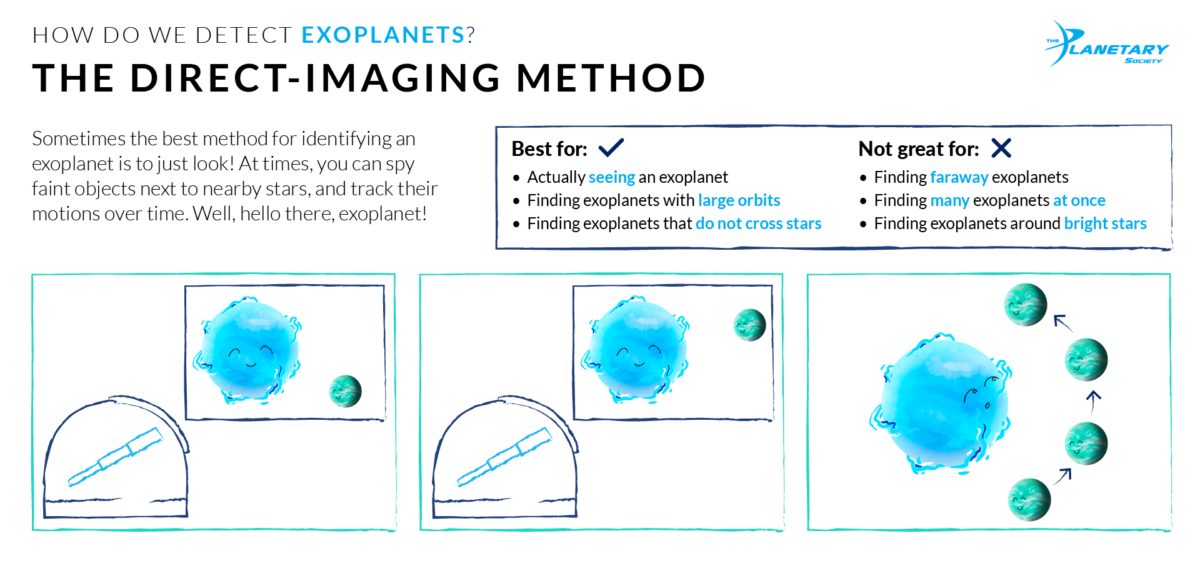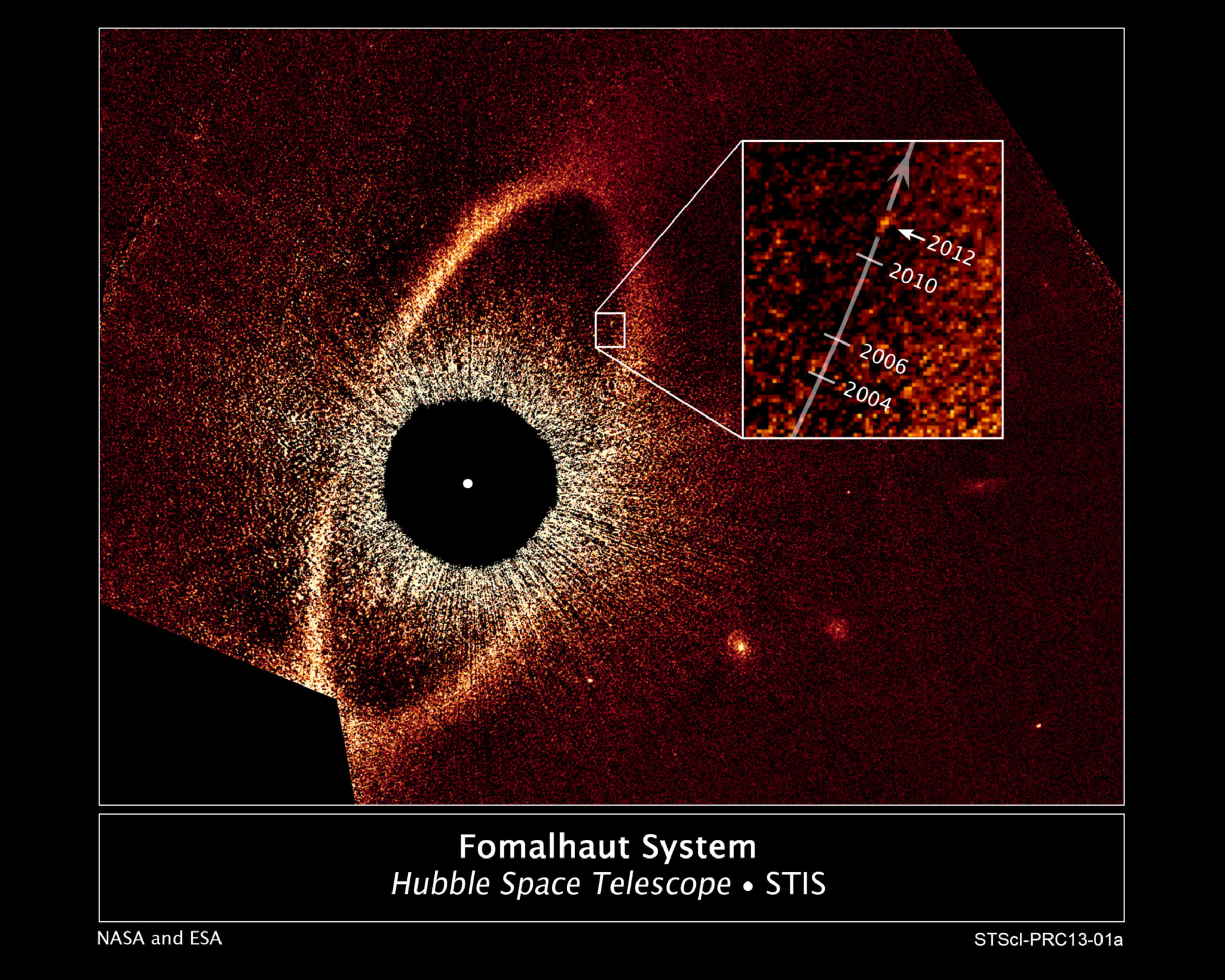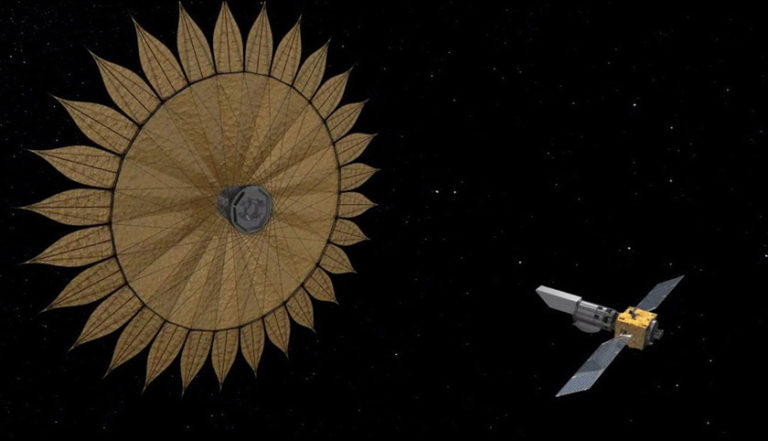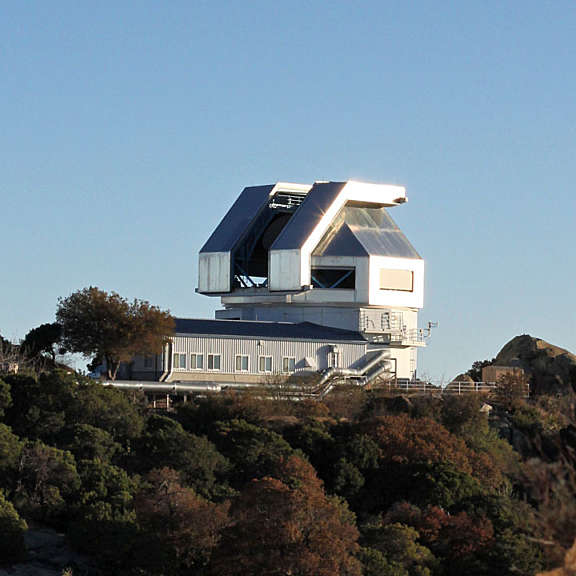Fireflies Next to Spotlights: The Direct Imaging Method
Direct imaging of exoplanets is extremely difficult and, in most cases, impossible. Being small and dim, planets are easily lost in the brilliant glare of the stars they orbit. Nevertheless, even with existing telescope technology, there are special circumstances in which a planet can be directly observed.

In November 2008, a group of astronomers using the Keck telescopes announced the imaging of 3 planets orbiting the star HR 8799. The Keck telescopes operate in the infrared range of the electromagnetic spectrum. HR 8799 is a young star, and the planets around it still retain some of the heat of their formation, which registers in the infrared range. In visible wavelengths, the reflected light from the planets would be swallowed up by the brilliance of the star, but at longer, infrared wavelengths, the planets' intrinsic heat glows comparatively brightly. With repeat observations, astronomers were able to observe the planets move in their orbits.
HR 8799 time-lapse animation The HR 8799 system hosts 4 super-Jupiter planets with orbital periods ranging from 40 to more than 400 years. This animation includes 7 images taken with the Keck telescope over a period of 7 years. Right-click on the video and select "loop" from the menu to make the video repeat.Video: Jason Wang (Caltech) / Christian Marois (NRC Herzberg)
On the same day that the imaging of the HR 8799 system was made public, another group of astronomers using the Hubble space telescope announced that it had imaged a planet orbiting the star Fomalhaut. This time, the observation was in visible light. The discovery was made possible by the fact that Fomalhaut is surrounded by a thick disk of gas and dust. The sharp inner edge of the disk suggested to astronomers that a planet had cleared out debris from its path, and pointed out where its orbit would be.
Following up on these clues, the astronomers were able to locate the planet in the Hubble images of the disk. Even so, the planet, estimated at no more than twice the mass of Jupiter, might well have remained invisible were it not for the fact that it was extraordinarily bright. This led scientists to believe that it was surrounded by a ring system many times thicker and more luminous than that of Saturn. Unfortunately, after several years of subsequent observations, the planet vanished. Astronomers now hypothesize that the anomalously bright "object" was actually an expanding debris field from the collision of two planet-sized bodies.

As of April 2020, 50 exoplanets had been discovered with direct imaging. Visit NASA's Exoplanet Archive for a current count and list.
There are plans for future missions and projects that would make direct imaging easier. Ground-based telescopes with adaptive optics systems obtain sharper images, helping astronomers separate planet and star light. Ground-based or spaceborne telescopes equipped with coronagraphs can block the light from the star just like you might use your hand to shade your eyes from strong sunlight, making it easier to spot planets. And missions have been proposed to fly a starshade in formation with the telescope, blocking starlight before it ever gets to the imaging instrument.

Advantages
For humans there is something magical about the ability to actually see an object. "Seeing is believing," as they say, and that applies to extrasolar planets as much as for anything else.
Direct imaging can provide scientists with valuable information about the planet. In the case of Fomalhaut b, for example, the planet's interaction with the protoplanetary disk and the fact that it is invisible in the infrared provided strong limits to its mass, and its exceptional brilliance led scientists to theorize that it is surrounded by a massive ring system. In the case of HR 8799, the infrared radiation from the objects combined with models of planetary formation provides a rough estimate of the planets' mass.
Direct imaging works best for planets that orbit at a great distance from their stars so that they are not lost in the star's glare. It also works best for planetary systems that are positioned face-on when observed from Earth. This makes it complementary to the radial velocity method, which is most effective for planetary systems positioned edge-on to Earth and planets orbiting close to their parent star.
Disadvantages
With current observation technology, direct imaging is possible on very rare occasions. It is most likely to succeed when conditions are just right, namely when a bright planet orbits at a great distance from a nearby star. Because of these strict limitations, direct imaging is not a good candidate for large-scale surveys searching for new exoplanets.
This page was updated in April 2020 to reflect the changed hypothesis on the status of Fomalhaut b.
How to Search for Exoplanets
Some methods almost sound like science fiction: Using gravity as a magnifying glass, watching stars wobble at turtle-like speeds, and searching for tiny dips in starlight.


 Explore Worlds
Explore Worlds Find Life
Find Life Defend Earth
Defend Earth


